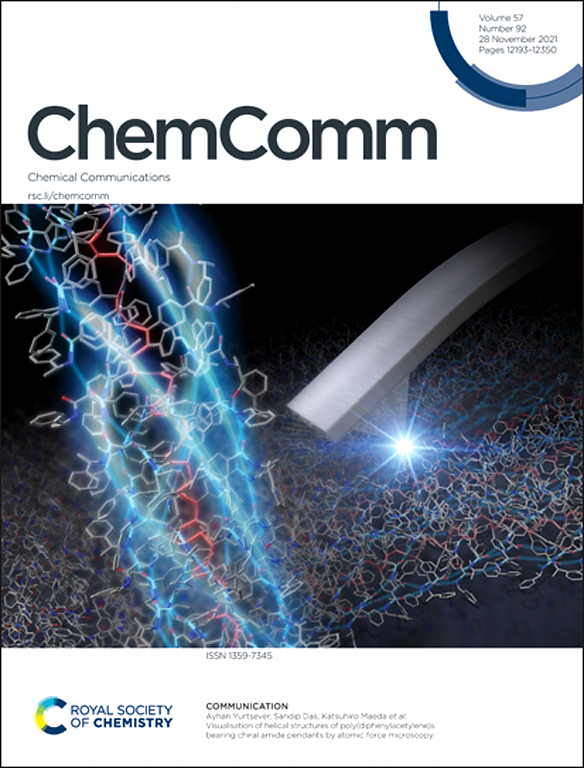HUH内切酶介导的dna -蛋白偶联物:序列特异性工具和细胞应用
IF 4.2
2区 化学
Q2 CHEMISTRY, MULTIDISCIPLINARY
引用次数: 0
摘要
本文综述了利用HUH内切酶作为未修饰的ssDNA序列特异性共价偶联的自标记蛋白标签的最新进展,并通过工程dna -蛋白偶联物研究了它们在细胞研究中的应用。我们概述了保守的HUH和Y基序的结构基础和催化机制,它们在生理条件下具有高选择性、生物正交性和强偶联性。最近的应用证明了基于huh的dna -蛋白偶联物在可编程细胞界面工程、靶向治疗递送和增强基因组编辑系统(如CRISPR-Cas)中的多功能性。在展望部分,我们进一步强调了两个新兴方向:用于预测底物设计的计算工具,如HUHgle平台,以及将HUH反应性扩展到RNA底物的定向进化策略。总之,这些进展使HUH内切酶成为生成dna -蛋白质偶联物的强大的可编程工具,使化学生物学,合成生物学和治疗学的创新成为可能。本文章由计算机程序翻译,如有差异,请以英文原文为准。
HUH Endonuclease-Mediated DNA-Protein Conjugates: Sequence-Specific Tools and Cellular Applications
This Highlight review article summarizes recent advances in employing HUH endonucleases as self-labeling protein tags for the sequence-specific covalent conjugation of unmodified ssDNA and examines their applications in cellular studies via engineered DNA–protein conjugates. We outline the structural basis and catalytic mechanism of the conserved HUH and Y motifs, which enable high selectivity, bioorthogonality, and robust conjugation under physiological conditions. Recent applications demonstrate the versatility of HUH-based DNA–protein conjugates in programmable cellular interface engineering, targeted therapeutic delivery, and enhancement of genome editing systems such as CRISPR–Cas. In the perspective section, we further highlight two emerging directions: computational tools such as the HUHgle platform for predictive substrate design, and directed evolution strategies extending HUH reactivity toward RNA substrates. Together, these advancements establish HUH endonucleases as powerful, programmable tools for generating DNA–protein conjugates that enable innovations in chemical biology, synthetic biology, and therapeutics.
求助全文
通过发布文献求助,成功后即可免费获取论文全文。
去求助
来源期刊

Chemical Communications
化学-化学综合
CiteScore
8.60
自引率
4.10%
发文量
2705
审稿时长
1.4 months
期刊介绍:
ChemComm (Chemical Communications) is renowned as the fastest publisher of articles providing information on new avenues of research, drawn from all the world''s major areas of chemical research.
 求助内容:
求助内容: 应助结果提醒方式:
应助结果提醒方式:


